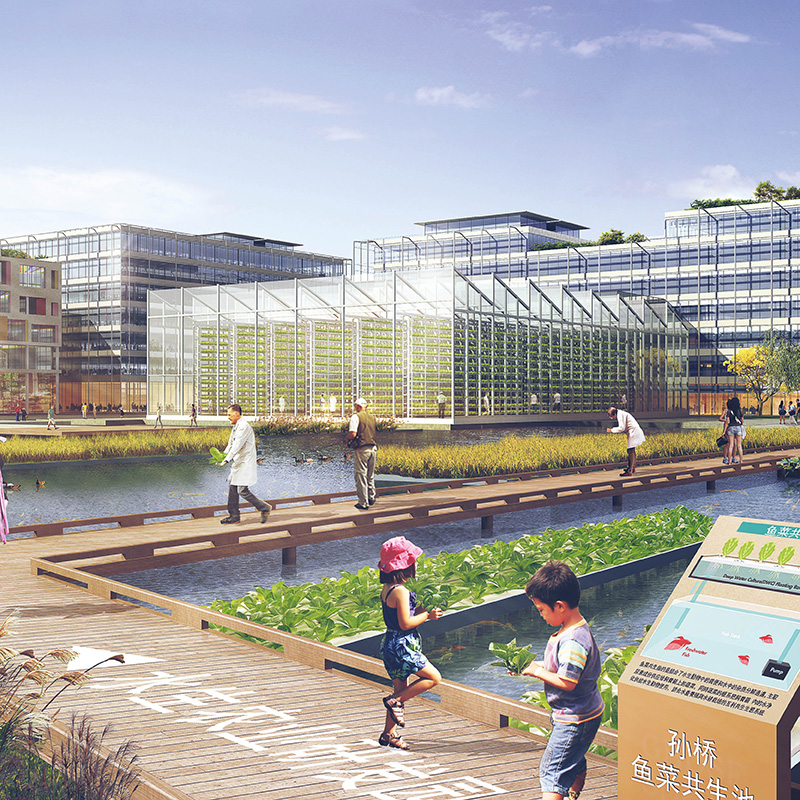Landscape Architecture Is Our First Line of Defence
December 16, 2020
The design community’s response to COVID-19, much like our reaction to issues of sustainability, tends to gravitate toward silver bullet solutions rather than necessary incremental change. Similarly, at the onset of the pandemic, our hubris and desire to manage Mother Nature guided us to focus on human-centric solutions to our predicament: advancing sensor technology [1] to limit our need to touch door handles and elevator buttons; designing buildings to be flexible [2] such that they can serve as temporary triage centres or hospitals; expanding our urban parks [3] so city dwellers have more recreational opportunities post-quarantine because of our renewed appreciation of the outdoors. These were all interesting ideas, but they are bandaids on a gaping wound. Until we stop disrupting ecosystems and thus reducing biodiversity, our efforts are superficial.
Instead, there are four fundamental areas that the collective design professions should be focusing on, and which landscape architects have the unique skillset to lead. These include:
1) championing habitat conservation;
2) fighting climate change;
3) advocating for responsible urbanisation and limiting sprawl; and
4) supporting advanced agriculture.
To be clear, I am not suggesting that landscape architects are going to single-handedly solve climate change or prevent the emergence of new viruses. But if we, as a species, aim to limit our potential future exposure, landscape architecture plays a vital role.

Wuhan Yangtze Riverfront Park, Wuhan, China (Image courtesy of Sasaki)
CHAMPIONING HABITAT CONSERVATION
By the end of the 21st century, the Center for Biological Diversity estimates that more than 50 per cent of the planet’s species will be extinct. A recent report by the United Nations calculates that over 1 million distinct species are already at the brink of extinction. What all this means is that Earth is currently losing animal species at 1,000 to 10,000 times the natural rate. Unlike mass extinctions of the past, which can be traced to external disturbances like a giant asteroid striking the planet, our current extinction crisis is entirely caused by our actions as humans.
Disturbances are ubiquitous in nature, and changes are critical to many vital biogeochemical processes. Most ecosystems can withstand disturbances until a certain threshold is reached, whereby irreversible changes may lead the ecosystem to a fundamentally different state or even collapse. The theory that nature is permanently in balance has been largely discredited in the late 20th century. What becomes difficult to predict with perfect accuracy, however, is exactly how ecosystems will respond. Habitat destruction and biodiversity loss do not only occur when we cut down tropical rainforests, though preserving rainforests is one of the most important things we can do at this moment in time. Also, COVID-19 is not the first disease to cross over from animal to human populations, but is likely a harbinger of more mass pandemics and further disruptions to the global economy. In fact, the World Health Organization notes that approximately 75 per cent of emerging infectious diseases in humans are zoonotic [4], meaning that they are transmitted to us through contact with animals.
References:
1 https://www.theguardian.com/society/2020/may/04/sensor-taps-door-handles-covid-19-rethink-public-toilets-bathroomdesign
2 https://worldarchitecture.org/article-links/efppz/mass-design-group-redesigns-hospital-spaces-on-the-fly-to-protect-healthcare-workers.html
3 https://www.bostonglobe.com/2020/05/05/opinion/parks-are-essential-especially-during-coronavirus-pandemic/
4 https://www.who.int/neglected_diseases/diseases/zoonoses/en/
5 https://www.pbs.org/wgbh/pages/frontline/aids/virus/origins.html
6 https://pubmed.ncbi.nlm.nih.gov/14738798/
7 https://www.discovermagazine.com/health/why-bats-are-breeding-grounds-for-deadly-diseases-like-ebola-and-sars
8 https://www.nature.com/articles/s41598-017-14727-9
9 https://www.sciencedaily.com/releases/2020/03/200326144342.htm
10 https://www.biorxiv.org/content/10.1101/2020.01.03.894675v1.full
11 https://www.rand.org/pubs/external_publications/EP20041011.html
12 https://www.latimes.com/opinion/story/2020-04-26/coronavirus-cities-density-los-angeles-transit
13 https://www.propublica.org/article/in-chicago-urban-density-may-not-be-to-blame-for-the-spread-of-the-coronavirus
14 https://www.nextbigfuture.com/2020/03/who-says-prolonged-exposure-in-confined-spaces-is-main-coronavirus-transmission.html
15 https://atlas-for-the-end-of-the-world.com/index_0.html
16 https://urbanization.yale.edu
17 https://www.conservationmagazine.org/2008/07/forest-fragmentation-may-increase-lyme-disease-risk/
18 https://www.history.com/news/cholera-pandemic-new-york-city-london-paris-green-space
19 https://www.sciencemag.org/news/2018/09/scientists-reveal-how-much-world-s-forests-being-destroyed-industrialagriculture
To read the complete article, get your hardcopy at our online shop/newsstands/major bookstores; subscribe to FuturArc or download the FuturArc App to read the issues.
Previously Published Main Feature
Contact us at https://www.futurarc.com/contact-us for older commentaries.


